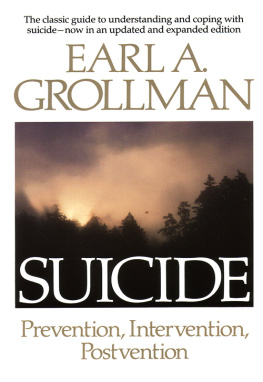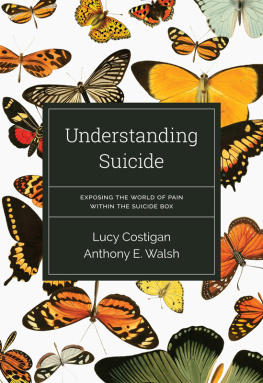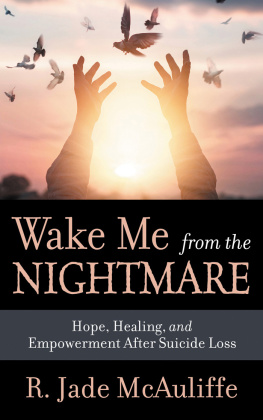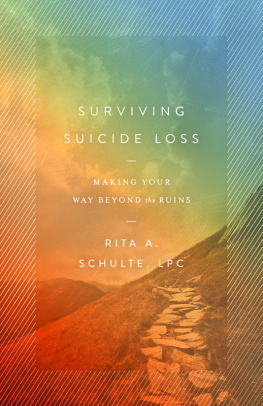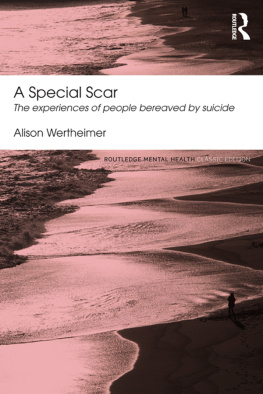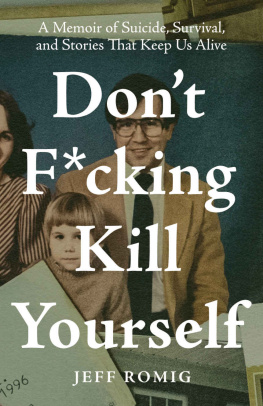Richard A. Heckler - Waking Up, Alive: The Descent, The Suicide Attempt... and the Return to Life.
Here you can read online Richard A. Heckler - Waking Up, Alive: The Descent, The Suicide Attempt... and the Return to Life. full text of the book (entire story) in english for free. Download pdf and epub, get meaning, cover and reviews about this ebook. year: 2014, publisher: Author & Company, genre: Religion. Description of the work, (preface) as well as reviews are available. Best literature library LitArk.com created for fans of good reading and offers a wide selection of genres:
Romance novel
Science fiction
Adventure
Detective
Science
History
Home and family
Prose
Art
Politics
Computer
Non-fiction
Religion
Business
Children
Humor
Choose a favorite category and find really read worthwhile books. Enjoy immersion in the world of imagination, feel the emotions of the characters or learn something new for yourself, make an fascinating discovery.

- Book:Waking Up, Alive: The Descent, The Suicide Attempt... and the Return to Life.
- Author:
- Publisher:Author & Company
- Genre:
- Year:2014
- Rating:5 / 5
- Favourites:Add to favourites
- Your mark:
Waking Up, Alive: The Descent, The Suicide Attempt... and the Return to Life.: summary, description and annotation
We offer to read an annotation, description, summary or preface (depends on what the author of the book "Waking Up, Alive: The Descent, The Suicide Attempt... and the Return to Life." wrote himself). If you haven't found the necessary information about the book — write in the comments, we will try to find it.
Waking Up, Alive addresses the penetrating hopelessnessthe loss of faiththat leads one to suicide. Pain and suffering visit us all. No one is exempt. No one has earned a special status that enables him or her to live without heartache or anxiety, sadness or fear. Sometimes these emotions galvanize our spirit and our will, emboldening us to forge ahead, confident of brighter horizons. At other times, adversity falls hard about us, like a long, cold, dark winters night, oppressive and impenetrable, sending us scurrying for warmth, or light, or someone with whom to wait until morning.
But for some people, morning fails to arrive. There is no place to run, or no one to turn to. For others, help may be available, but they are unable to reach out, let a loved one in, or even identify their pain. Waking Up Alive: The Descent The Suicide Attempt and the Return to Life is a book about suffering and the relief of suffering.
Its hard to imagine a hopeful or inspiring book on suicide, writes the San Francisco Chronicle, until you begin reading the astonishing Waking Up, Alive. True, the words around these 50 people before they tried to kill themselves were often ones like acutely depressed, isolated in unbearable pain and suffering in quiet desperation, but the failed suicide attempt act itself appears to have performed a quiet miracle, forcing their lives into a new direction. In their own words, writes Kirkus Reviews, Hecklers subjects reveal the devastating effects of depression, traumatic loss, extreme family dysfunction, and alienation. As each of their stories unfold, the critical elements in the suicidal urge become identifiable. Early unresolved pain compounded by present adversity is a chief precursor of suicide. Many of the interviewees relate early experiences of loss and trauma that they were not able to mourn: They were experts at putting up a faade. But once this faade could no longer be maintained, many fell into a state that Heckler identifies as the suicidal trance. At this stage, suicide seems a logical optionalmost an imperative The catharsis of their suicide attempts were so powerful, in fact that many of the suicide survivors have moved on to success in the suicide help and counseling professions.
A wise and ultimately life-affirming work, says Jack Kornfield, Ph.D. EXTRAORDINARY, writes the Los Angeles Daily News, FASCINATING Worthwhile reading both as a kind of survival epic and for the lessons it affords us all coping with the trials of daily life. An invigorating testament to the resilience of the human spirit, writes Wayne Muller, Richard Heckler skillfully guides us through the most unimaginable sorrow and despair, and allows us to taste the triumphant harvest of healing and grace.
And with each reader who also steps into the shoes of those in the book, not only reading the stories and commentary but endeavoring to touch the humanity underneath, we begin to bridge the gap between those who have attempted suicide and those who havent. We come closer to understanding the complexities of the human hearttheirs and oursand we may even save lives.
The goal of this book is to inspire those who have experienced the devastating effects of depression, traumatic loss, extreme family dysfunction, or alienation and to provide the motivational help and understanding surrounding loss of faith, pain and suffering and to provide a path back to renewed faith and life.
Richard A. Heckler: author's other books
Who wrote Waking Up, Alive: The Descent, The Suicide Attempt... and the Return to Life.? Find out the surname, the name of the author of the book and a list of all author's works by series.


